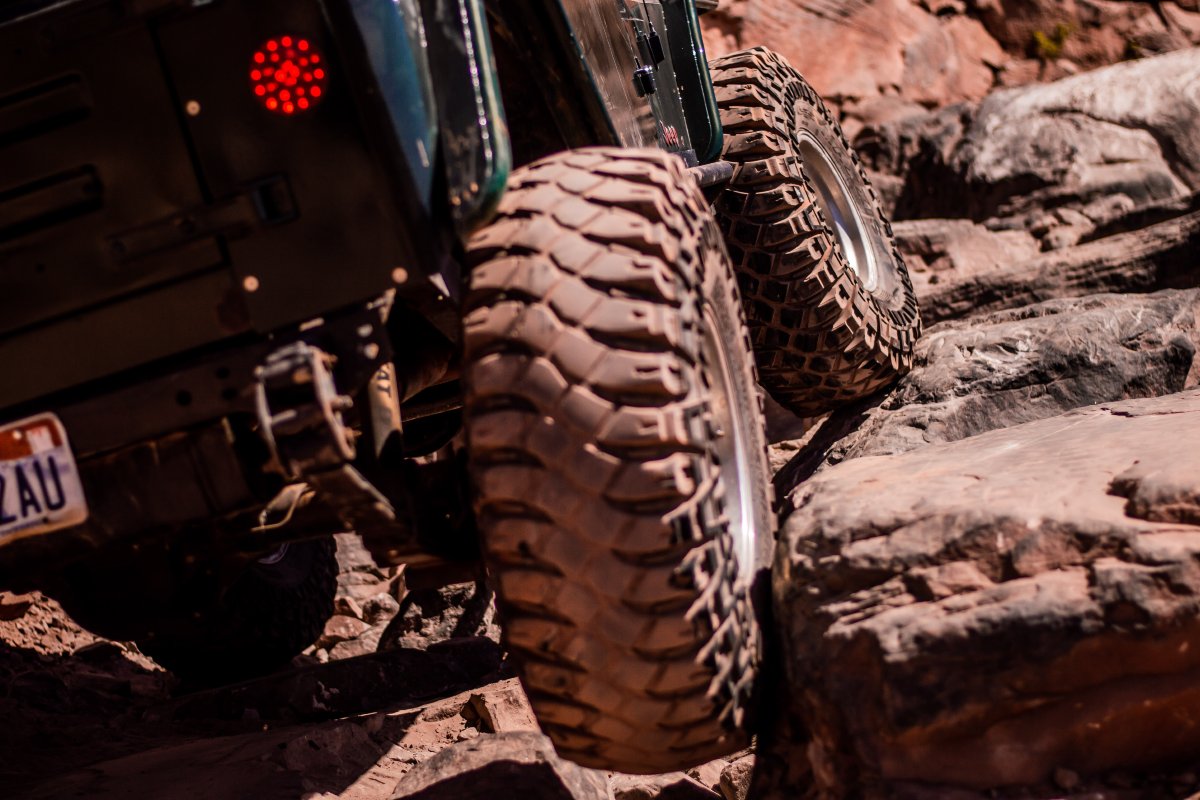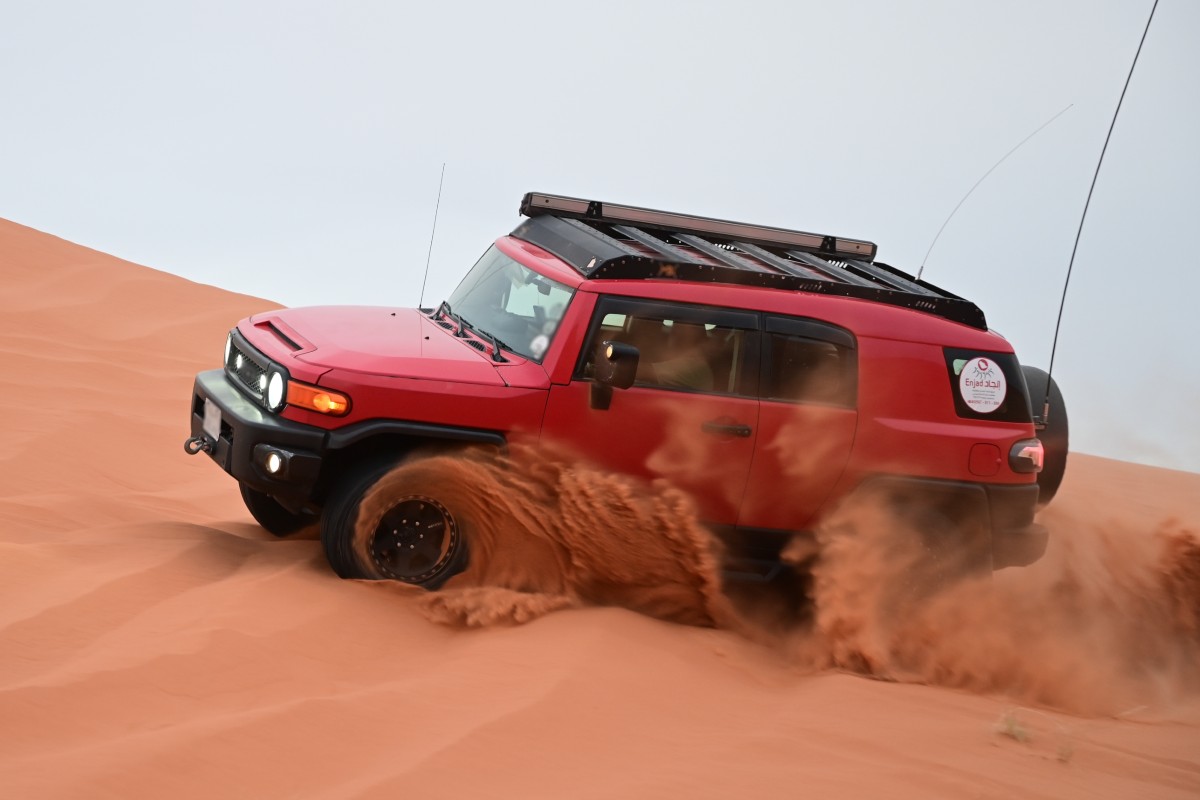If you’re new to the off-roading lifestyle, you might not realize just how important your tire pressure is. For most of us, tire pressure is just something we need to keep an eye on every once in a while. We have to make sure that each of our tires are set to the right pressure, which most modern cars do for us, then occasionally top it off if they get too low. But for off-roading, the PSI of your tires can have a pretty big effect on how well you maneuver over rough terrain. Today on the LiftedJeeps.com blog, we’re going to take a look at both rock and sand, highlighting the best tire pressures for different situations.
Why Airing Down Matters
Let’s first discuss exactly why airing down matters when you’re off-roading. In mundane driving, having proper tire pressure ensures good handling, efficiency and braking, but when you’re hitting the trails traction is much more important than normal. Lowering the tire pressure in each of your tires will in turn increase the area that actually touches the ground, thus improving your traction and softening your ride by allowing your tires to flex around obstacles instead of just bouncing off of them. However, if you go too low you can risk separating the tire bead from your wheel rim or possibly even damaging your sidewalls. It’s incredibly important to find the sweet spot for your setup and the terrain you’re planning to tackle.

Recommended PSI for Rock Crawling
Rock crawling is an incredibly exciting activity for off-roaders, but it’s all about control, traction and tire flex if you want to do it well and safely. Perhaps more than any other activity, it’s important to air down appropriately when rock crawling, as you want your tires to mold to the terrain to maximize your traction. If you have standard wheels on your build, you should aim for between 12 to 18 PSI. If you’ve instead equipped your build with beadlock wheels, you can go even lower and shoot for 6 to 12 PSI.
Beadlock wheels are a great choice for any off-road build, but they’re real game changers when it comes to rock crawling. A beadlock wheel clamps the tire bead to the rim, which allows you to safely run lower pressures without the risk of de-beading like we mentioned earlier. Just make sure when running extremely low tire pressures to keep an eye on any bulging in your sidewalls, and avoid low-speed sharp turns to prevent tire damage.

Recommended PSI for Sand Driving
Driving on sand is a completely different animal, but you still want lower tire pressures — just for different reasons. Rather than enhancing your grip on the terrain, lower tire pressure helps with flotation. What you’re trying to do is make it so your tires stay on top of the surface instead of sinking into it, and believe it or not lowering your tire pressure is key in achieving this. Lowering your PSI spreads the weight of your vehicle out over a larger area, which is going to help you glide over dunes without getting bogged down in the sand.
If you’re running standard wheels you’re going to want to shoot for 10 to 15 PSI on sandy terrain, or you can drop down to 8 to 12 PSI with beadlocks. Alternatively, if you have a really heavy-duty rig with reinforced tires, you might want to drop even further and run from 6 to 8 PSI. Also keep in mind that the softer the sand you’re driving over, the lower you’re going to want your tire pressure to be. Continue to avoid sharp turns, and make sure you have a way to air your tires back up before hitting pavement, as you can cause premature wear and tear or even failure by driving at highway speeds with such low pressures.
If you have any questions or need further advice before tackling your favorite terrain, don’t hesitate to get in touch with us here at LiftedJeeps.com. We look forward to hearing from you!


